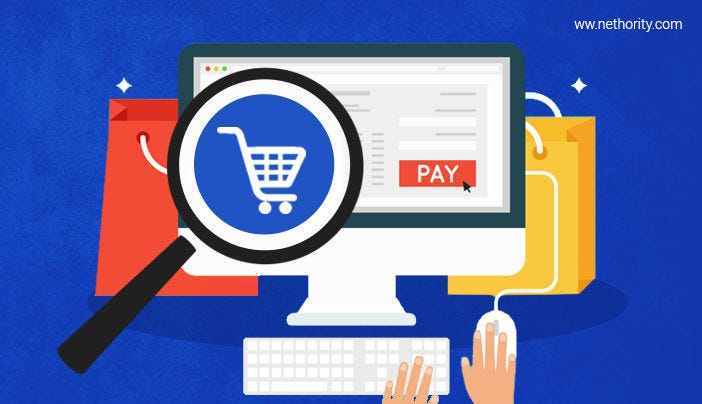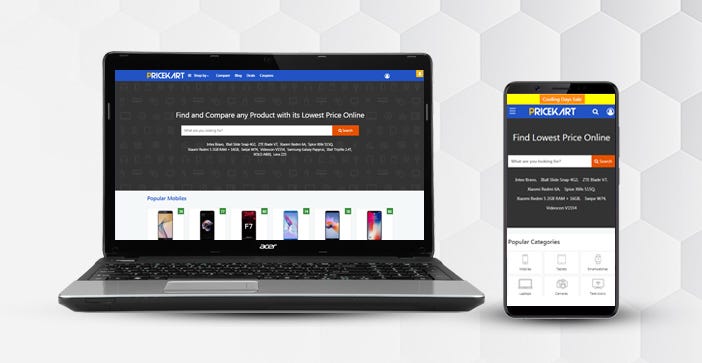Latest news about Bitcoin and all cryptocurrencies. Your daily crypto news habit.

If you own an ecommerce website and want to optimize it for SEO, Well! This article is your guide. If your customers can’t find you online, how will you make a sale? Getting visibility on search engines and ranking higher for searches is very crucial for making sales.
SEO for an ecommerce website is not same as SEO for other types of websites. We’ll help you to reach your potential customers along with improving revenue as well as your brand visibility. If you have an ecommerce Store then you’ll agree that:
- You have tons of pages.
- Many auto-generated URLs are added to your website every day.
- There might be many pages with same content on your website.
- You can’t go and optimize each and every page because it can become an unending task.
Not to worry, we are here with some amazing tips that will help you optimize your ecommerce website for SEO and increase your traffic and conversion rates. You can get it done by experts too. Check Ecommerce SEO Packages
Let’s get started,
1) Clean up unwanted pages.
Your online store might have many product pages which must be out-of-stock from a very long time. If you know that they’ll never be in-stock again then better to remove these pages from your sitemap as well as listing pages. Don’t delete these pages as it may cause page error. You can either redirect the URL to other similar page or put them into a no-index tag. The point is; we don’t want Google crawlers to crawl these unnecessary pages avoiding other significant pages.
2) Unique Title and Meta Tags for all pages.
Now, you already have tons of pages and you can’t manually write Title and Meta tags for each and every page. So the solution is to use static and dynamic text combination to set unique Title and Meta Tags for all product pages. For example, you have ‘Nike Sports Shoes’ and ‘Nike Casual Shoes’ as products.Title Tags can be: ‘Best Offer on Nike Sports Shoes. Buy at Lowest Price’ and ‘Best Offer on Nike Casual Shoes. Buy at Lowest Price’’Here, the static text is ‘Best Offer on. Buy at Lowest Price’ and Dynamic text is the product name itself. Thus, by combining static and dynamic text you can have unique Title & Meta tags for all your product pages.
3) Category pages should have an individual home page.
If you have divided your products into categories like Gadgets, Fashion, etc. Then, have separate home pages for Gadgets, Fashion & Lifestyle, etc. Do not mix products from different categories on one page as if will affect your UX. If you find it difficult to optimize your e-commerce store, let the experts handle. Check our Ecommerce SEO Services
4) Use Canonical Tags.
Being an e-commerce website, your site might have pages which have similar content. For example: If you have a product which comes in Red, Blue and Pink colors then there is a probability that you may have three different pages which have similar content with just a slight difference of color. Thus, you need to tell Google that these pages may look similar but belongs to different products. Using rel Canonical tag will help you to manage your duplicate content.
5) Optimize for Google’s Mobile-First Index.
In 2018, Google has decided to look at your website’s mobile version first, to decide your rank, and then check desktop version for your site. As more and more people are preferring mobiles, the majority of your traffic will be from mobile devices. Thus, you need to have a website which works smoothly on mobiles. Make your online store responsive and mobile-friendly.
Here’s a snapshot for Website: Pricekart.com. This is how your website should look in Desktop and Mobile view.
6) Optimize Images of Products you are selling.
Every product page on your online store has many images of the product you are selling, right? Make sure every image you use must have an ‘alt’ text. If any image is broken, care to remove or replace it. Also, avoid using many heavy images which may increase your website’s load time. Maintain the same image size on all product pages.
7) Prioritize URLs in Sitemap.xml
Since your website has too many pages, you need to prioritize the URLs or pages that you want to get indexed first. Adding up all the pages in the sitemap will never give you wanted results as crawlers may crawl many low priority pages instead of pages that you actually want to rank high for. Be wise while choosing the pages that you want to add in sitemap.
8) Optimize Home Page.
Make sure that your home page has links to your product pages as well as category pages. Do not do excessive inter-linking by adding too many links on home page. Make it simple and attractive. Use attractive banners and sliders to flaunt your products, offers and discounts. Add ‘About Us’ and ‘Contact Us’ page in the footer of your home page. Use an ever-present search box so that your buyers can easily search for products they are looking for. Optimize your search box to make your products easily accessible.
9) Use catchy Meta Descriptions for Home Page.
Try to include words like ‘Free Shipping’, ‘COD’, ‘Huge Discounts’, ‘Cashback’ in your Home Page Meta Description. Remember; do not mislead your customers by using words like ‘Cashback’ if you are not providing Cashbacks. Be true to your buyers as trust matters while shopping. Try to include long-tail keywords into your Meta Tags.
10) Add Product Description and Reviews.
You must have proper product description for all products that you are selling. The description should include everything a buyer looks for before buying a product. Adding expert reviews as well as user reviews for products can be beneficial too. Let your users rate the product that they bought from your website. This builds a trust for your website. Also, if the reviews are bad then you know what changes are to be done. To improve UX of your online store, take user feedback as well.
SEO is a slow process thus, it’ll take time to see results. However, believe me, it’s worth the wait. Follow above tips and see a hike in your revenue and rankings.
Top 10 SEO Tips for Ecommerce Websites — 2018 was originally published in Hacker Noon on Medium, where people are continuing the conversation by highlighting and responding to this story.
Disclaimer
The views and opinions expressed in this article are solely those of the authors and do not reflect the views of Bitcoin Insider. Every investment and trading move involves risk - this is especially true for cryptocurrencies given their volatility. We strongly advise our readers to conduct their own research when making a decision.
